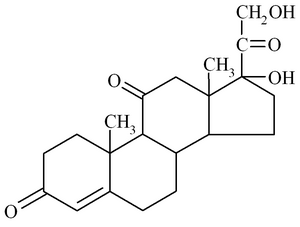It has been said that inflammation can occur without healing, but healing cannot occur without inflammation.1 Unfortunately, "ideal" healing, which results in the restoration of anatomic continuity with complete normal anatomic structure and function, is rarely if ever obtained; "acceptable" healing is what we usually hope to achieve. "Acceptable" healing is defined as restoration of sustained anatomic continuity and function.2 "Minimal" healing is the restoration of anatomic continuity without sustained function.2 Injured tissues, such as tendons or ligaments, repair by scar deposition that never exactly replicates the histologic or biomechanical properties of the original structures.3
"Although commonly treated as an unwanted hindrance to athletic performance, inflammation is a complex vascular, cellular, and biochemical event necessary to healing and repair."1 In a soft-tissue injury that results in inflammation, a type of mechanical load must be present that will cause a vascular disruption. The primary site of injury must occur at capillary and postcapillary venules. Normally within the vasculature there are circulating erythrocytes, leukocytes and plasma components separated from the tissue by the endothelium. As soon as there is damage to the endothelial structure there is local platelet activation, leakage of plasma components, and emigration of erythrocytes and leukocytes into the extracellular matrix. From this moment on, an inflammation occurs.
All of the above refer to an acute lesion due to a macrotrauma causing vascular disruption. But a large percentage of problems we see in a chiropractic office refers to repetitive microtraumatic injuries - especially in tendons. Rather than an immediate vascular disruption resulting in an -itis, a tendinosis results, which is defined as "intratendinous degeneration owing to repetitive microtrauma causing noninflammatory intratendinous collagen degeneration." In this case, there may be a palpable nodule with no tendon or sheath swelling.4 When inflammation does occur, it is more prevalent in the outer layer of a tendon sheath or peritendinous areolar tissue.5 In this type of tissue, there is an influx of inflammatory cells into the tissues surrounding the tendons. Eventually there is exudation of fluid into the tendon sheath.6 The fluid thickens and the tissue becomes more edematous, causing the tendon to lose its gliding properties, resulting in pain and restriction of motion. De Quervain's disease is a good example of the latter. These lesions used to be classified as peritendinitis, tenosynovitis, and/ or tenovaginitis. These terms have been replaced by the general term peritenonitis.
Pathologic examinations of tissue from elbow epicondylitis, plantar fascitis, patellar tendonitis and Achilles tendonitis seldom if ever show the inflammatory cells necessary to define it as an -itis.4
A major question now arises. If there is no inflammation in most degenerative microtraumatic lesions, why are corticosteroids injected into these tissues? An interesting answer appeared in Current Opinion in Orthopaedics.7 The authors state that although the tendinosis is not primarily an inflammatory condition, symptoms may be relieved by controlling pain and "myositis and tendonitis in adjacent areas." Did they check the adjacent areas for inflammatory cells? I doubt it. The statement that really excited me was the other reason why they think the injection works and it has nothing to do with the corticosteroids. "Their mechanism of action may be related to the soft tissue trauma and bleeding caused by the injection, acting as a stimulus for extrinsic healing of the tendon." This is the exact reason given for the healing created by deep pressure (friction massage, Graston technique) on soft-tissue lesions. As previously stated in past soft tissue articles quoting from the authorities based on pre-and-post-biopsies after friction and Graston, a new inflammatory cascade is created to allow healing to occur.
Warren Hammer,MS,DC,DABCO
Norwalk, Connecticut
softissu@optonline.net
Warren Hammer,MS,DC,DABCO. Dr. Hammer's articles, a "Talk Back" forum, and a brief biography of the author are available on line at www.ChiroWeb.com/columnist/hammer.
A printable version of Dr. Hammer's article is available on line at www.ChiroWeb.com/columnist/hammer. You may also leave a comment or ask a question at his "Talk Back" forum at the same location.
Copyright Dynamic Chiropractic Jan 1, 2002
Provided by ProQuest Information and Learning Company. All rights Reserved



